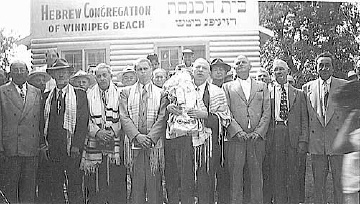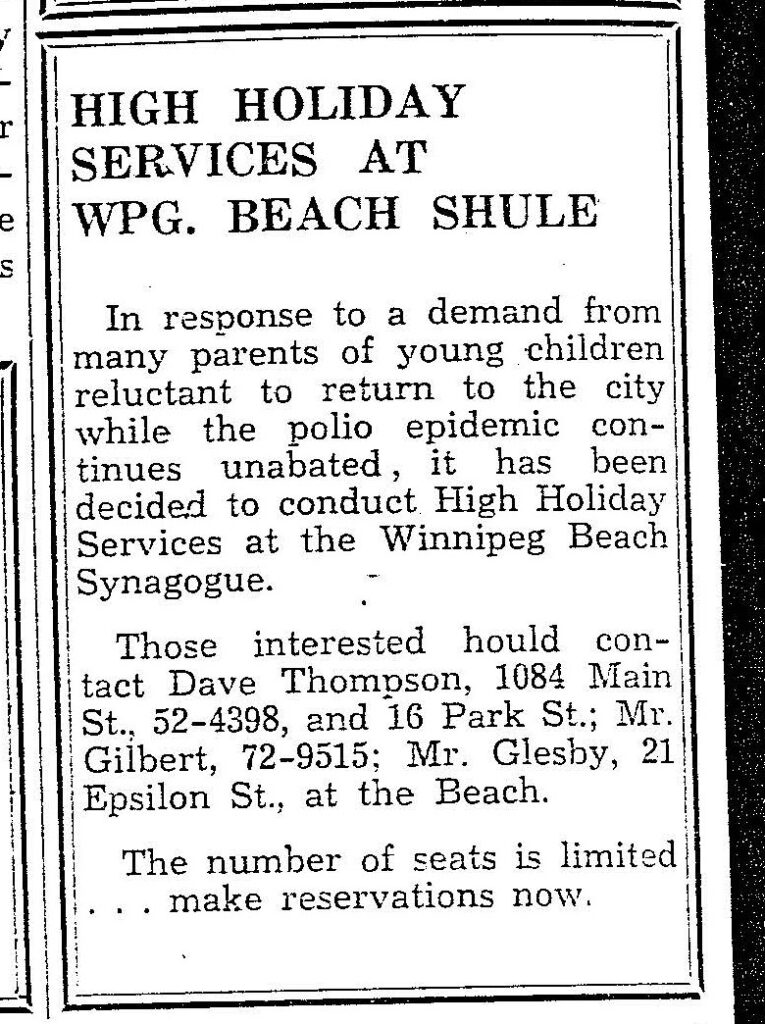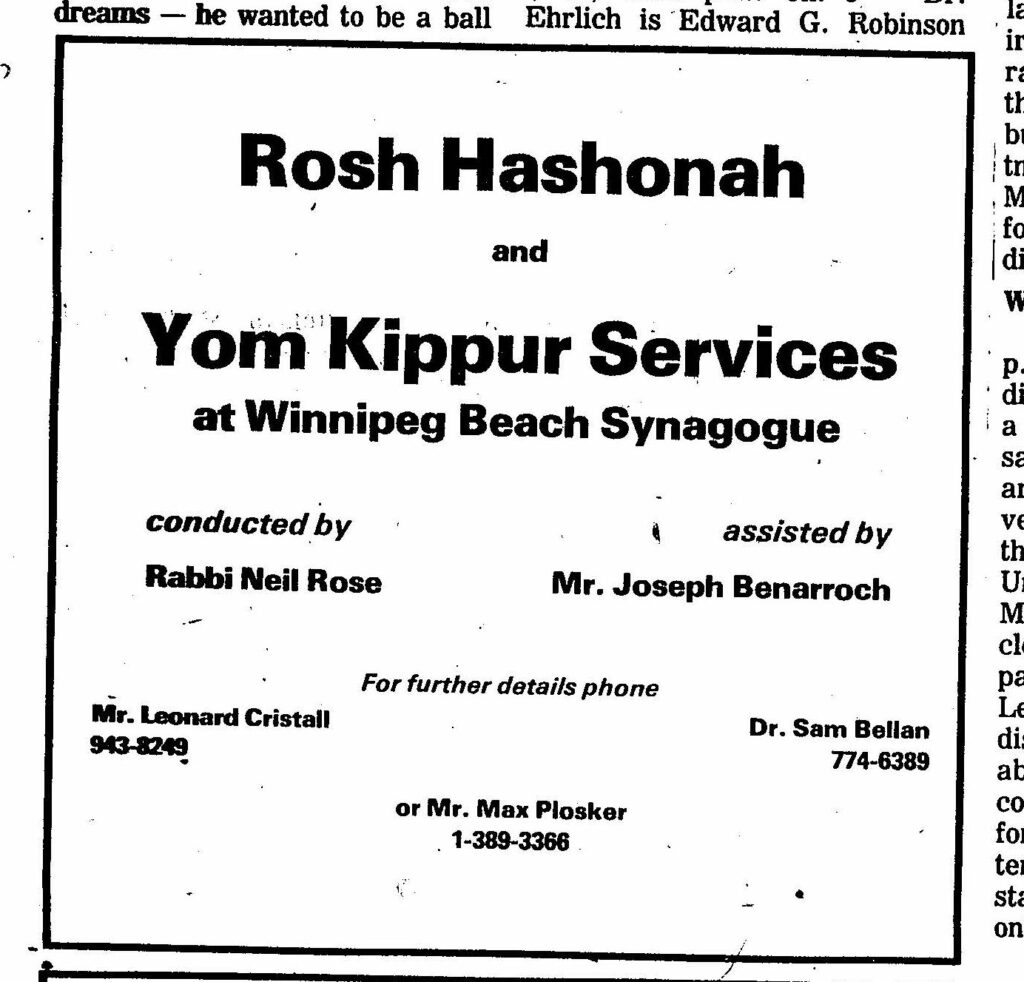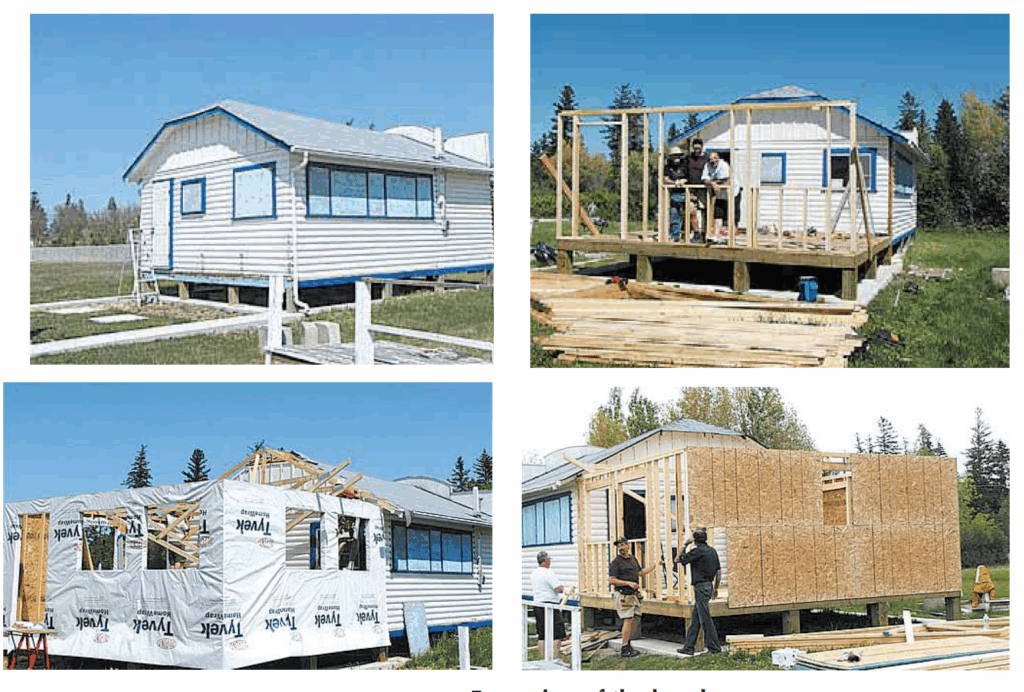Features
“Incident at San Miguel” – new novel set in the Cuban Revolution in 1958 provides rich insight into Jewish life in Cuba
By BERNIE BELLAN The history of Cuba’s Jewish community is quite an interesting one. According to Wikipedia, “more than 24,000 Jews lived in Cuba in 1924, and still more immigrated to the country in the 1930s. Following the 1959 communist revolution, 94% of the country’s Jews emigrated, most of them to the United States. In 2007 an estimated 1,500 known Jewish Cubans remained in the country, overwhelmingly located in Havana.”
I’ll get into my review of a book set in Cuban in the 1950s later, but first I wanted to provide some background about the very important role that Canada has played in helping the Cuban Jewish community, especially since 1973.
Following are some excerpts from past issues of The Jewish Post that will provide the reader with a basic understanding of how helpful Canada has been to Cuba’s Jewish community:
From the Nov. 24, 1983 issue: “Canadian Jewish Congress (CJC) will send $30,000 worth of religious articles and supplies to the Jewish community of Cuba, the World Jewish Congress has announced here. Ever since the U.S. severed relations with Cuba in 1960, the CJC has looked after the needs of Cuban Jews” (emphasis mine).
From the November 17, 1999 issue, headlined: “Canada played key role, helping Cuban Jews emigrate to Israel”:
I, myself, wrote the following: “On October 11, the Globe & Mail broke a story in this country headlined ‘Canada aids Cuban exodus – Secret transit of Jews has gone on 25 years.’ “
That story went on to detail how Canada had facilitated the emigration of some 400 Cuban Jews to Israel, beginning in 1973. (Cuba broke off diplomatic relations with Israel at the time of the Yom Kippur War.)
Subsequent to that story I was able to interview Lloyd Axworthy, who was Canada’s Foreign Minister at that time. I asked Axworthy about Canada’s role in helping Cuban Jews emigrate to Israel. He explained that, “beginning in the early 70s, we undertook to set up what we call the Israeli interests unit in our embassy (in Havana), staffed by a locally-engaged person, not only to represent Israeli interests, but also to expedite the emigration from Cuba of members of the Jewish community.
“Since it’s been in operation, there have been about 400 visas that have been obtained. What we do is simply work it from Havana to the Israeli embassy in Ottawa.”
That interview went on to explore how Canada had kept its role relatively quiet, although apparently it was very well known within the Jewish community in Cuba that if you wanted to emigrate you should approach the Canadian embassy.
As Axworthy noted during that interview, “We’ve been quite careful to keep it low key. There was no point in broadcasting it, because there are sensitivities in Cuba to such things.”
I came across another interesting aspect to the role Canada has played in helping Cuba’s Jewish community in 2013 when I learned that Canada’s then-ambassador to Cuba was someone by the name of Matthew Levin, who was an old childhood friend. I emailed Matthew in January 2013, asking him whether he would consent to an interview and he responded warmly.
He also happened to mention something else that I found quite interesting. In response to my telling him about my interview with Lloyd Axworthy many years prior, Matthew wrote in an email to me that “the connection with Lloyd Axworthy and Cuban Jews is of great interest. Coincidentally my wife is now coordinating the Aliyah program in Cuba from the Embassy.”
Alas, much as Matthew was willing to be interviewed, an apparatchik from what was then called the Department of International Affairs and Foreign Trade stepped into the mix and informed me that I couldn’t actually speak to Matthew; instead, I was told, I could email whatever questions I wanted to ask in advance.
I explained to the apparatchik that I wanted to do a folksy interview with someone who was an old friend and that emailing questions would deprive what I was wanting to do of any spontaneity. You can guess how far that went.
In any event, all this serves as a prelude to a review of a book that I actually finished reading a couple of months ago – and had wanted to review at that time. The book is called “Incident at San Miguel,” by A. J. Sidransky. Mr. Sidransky (and I did ascertain that he was a man, although it’s always difficult when you only know an author’s initials) had sent me a review copy of the book back in November, but I didn’t get around to beginning reading it until February.
After I did finish the book and emailed Mr. Sidransky to tell him how good I thought the book was – and that I was now ready to publish a review, I was somewhat surprised when he asked me to hold off publishing the review, writing “Could you hold the review for May? The book release is May 19. Right now we only have preorders for kindle to be delivered May 19.”
However, I just took a look and saw that “Incident at San Miguel” is available for pre-ordering, either in paperback on Amazon or in Kobo format.
Review of “Incident at San Miguel”
With that out of the way, let’s talk about the book itself. The foreword to the book is written by someone by the name of Miriam Bradman Abrahams, who explains that she is the Cuban-born daughter of Cuban Jewish refugees. Her family had been separated from the family that remained in Cuba for over 40 years, although some of her Cuban family had been able to visit Ms. Abrahams’ family in New York in 2001. Ms. Abrahams had long wanted to visit Cuba, she explains, but wasn’t able to do so until 2008.
She told the story of her family to A. J. Sidransky, who is a Spanish-speaking writer of fiction. Mr. Sidransky took elements of Ms. Abrahams’ story and mixed in some fictitious parts to produce “Incident at San Miguel.”
Here is a synopsis of the book: “Havana, Cuba. December 1958. Two brothers find themselves on opposite sides of Castro’s revolution. One dark night, after rescuing a leader of the revolt under house arrest, one brother finds himself hunted. The other, an influential attorney, must make a choice. Help his brother, placing the whole family at risk, or let Batista’s forces capture him. His decision will haunt them both for the rest of their lives. How far will we go to protect those we love? Based on a true story, Incident at San Miguel takes us there.”
Although I was somewhat familiar with the Cuban Revolution and Fidel Castro’s ascent to power, I was fascinated to learn that it was quite some time after Castro and his followers had taken over Cuba before he began to introduce communism to that island.
“Incident at San Miguel” begins in 1958, which was shortly before the then-dictator of Cuba, Filgenico Batista, was overthrown by Castro.
Two brothers, Aaron and Moises Cohan, find themselves on opposite sides of what is transpiring at that moment in Cuba, although, as the novel opens, we see that the brothers do get along quite nicely. Aaron is a lawyer, working in the Batista administration, while Moses is an economist who is aligned with the revolutionaries seeking to overthrow the government.
As the story develops we learn quite a bit about the Jewish community in Cuba at that time. Although most Jews would have been considered middle class, a number of them had become very wealthy businesspeople. The majority of Cubans, however, were quite poor.
In his own introduction, Mr. Sidransky provides an analysis why Jews were continually subjected to persecution by totalitarian regimes in the 20th century, writing that “As in all totalitarian regimes, there is always a boogeyman. In the case of the Nazis and the Hungarian Fascists in the 1930s and 40s that boogeyman was the Jews. In the case of communist systems, including Hungary under Soviet communism, and Castro’s Cuba, the boogeyman is the entrepreneurial or capitalist class. In the absence of a religious, ethnic, or racial minority to blame for the nations’ problems, Communism points its finger at an economic class to which it ascribes the suffering of its people and the nation.”
And, as successful members of that economic class – at least to some extent, it was hardly a surprise that Jews suffered under the Castro regime once communism became solidly entrenched as the economic model for Cuba.
But, as “Incident at San Miguel” relates, it was not at all clear what was in store for Cuba in the late 1950s. Batista’s secret police were everywhere, revolutionaries who were found out were either imprisoned or worse, executed, and despite the continued inroads that Castro’s and other revolutionaries seemed to be making, life in Havana, at least, continued in what seemed to be a normal fashion.
Moises Cohan, though, finds himself caught up in a daring plot to free a former professor of his, who is a hero to revolutionaries, and who has been held under house arrest by the Batista regime. Hence the name “Incident at San Miguel” because the particular incident in question, in which an attempt to free the professor, leads to a whole mess of intrigue as a result.
Moises finds himself on the run and seeks Aaron’s help in being able to escape. Aaron is torn between two worlds. He has been promoted to a senior position within the regime and, helping his brother would not only be a betrayal of that regime, it would be exceedingly dangerous.
Time moves on and on New Year’s Eve, January 1, 1959, the Batista regime folds and Castro’s revolutionaries march into Havana.
Mixed in with the political intrigue are the relationships the two brothers have developed with two vastly different women. Aaron’s fiancée, Beatriz, herself comes from a prosperous Jewish family, and she is perfectly at home with Aaron’s parents, Esther and Rafael.
Moises’ lover, Ana Teresa, in contrast, is a dedicated revolutionary whose first order of business is not romance, but fighting. Moises keeps his relationship with Ana Teresa a secret from his parents, knowing that they would be devastated to learn that he has taken up with a non-Jewish woman.
In time, both Moises and Ana Teresa rise to senior levels within the new Castro regime, yet their romance begins to flounder. Moises is an idealist who believes strongly in the ostensible goal of the revolution to bring about greater equality among the classes. Ana Teresa, it turns out, is a ruthless – and cynical, revolutionary, who is quite prepared to compromise her ideals if it means entrenching the new regime. When it becomes clearer, however, that the new regime wants to bring about equality by leveling the upper and middle classes, Moises begins to become increasingly disillusioned with what is happening – and with his lover.
A fascinating subplot develops when Moises happens to stumble upon a scheme whereby someone in the regime is reaping huge financial rewards through extorting Cuban businessmen, many of whom happen to be Jewish. Reading how Moises undertakes to get at the heart of this corruption introduces an exciting element of suspense into the novel.
We also learn how difficult it quickly became once the new regime was in place for Cubans to obtain exit visas. By this time Aaron and Beatriz have a young baby. The horrible dilemma with which Aaron has to deal is that bureaucrats are willing to let Aaron and Beatriz leave, but their child is denied permission.
That sets in motion a whole new set of challenges for Aaron – who would also love to be able to get both his and Beatriz’s parents out of the country. The parents, however, have a strong attachment to Cuba and are not interested in leaving the country.
I was somewhat surprised to learn that 94% of Cuba’s Jewish population did leave Cuba following the revolution – given how difficult obtaining exit visas was, but when I tried to deduce just how many individuals that figure of 94% represented, I wasn’t able to figure that out. If Cuba’s Jewish population was 24,000 in 1924, as Wikipedia says, and there was an influx of Jews from Europe in the 1930s, then the number of Jews who left Cuba following the revolution had to have been well over 23,000. How did they all get out, I wonder – especially after reading this book and learning how difficult it was for anyone to leave the country after a certain point? I’d certainly like to learn more about when and how so many Jewish Cubans were able to leave following the revolution.
Yet, in reading about the wonderful texture of life in Cuba prior to 1959 – at least for those who were able to enjoy a reasonably prosperous standard of living, such as the Cohan family did, life certainly seemed idyllic in many respects. The descriptions of the kinds of foods that are native to Cuba that the Cohan family was able to incorporate into their daily fare are quite tantalizing, as are the descriptions of the wonderful climate and the beautiful countryside.
“Incident at San Miguel” also provides many insights into the dynamics that underlay the Cuban revolution, including how much democratic ideals inspired so many of the young revolutionaries. While Fidel Castro himself only makes a cameo appearance in the book, Che Guevara plays a prominent – and altogether despicable role. While the book is a work of fiction, with many elements based on the true story of Miriam Bradham Abrahams’ family, the author has certainly done extensive research into life in Cuba in the 1950s. There are some vivid descriptions of how business was conducted – and how much corruption played a part in both the old and new regimes.
A political thriller with many romantic aspects and a vivid portrayal of a country that had so much promise had it not been exploited by one dictatorial regime after another, “Incident at San Miguel” is a riveting read.
Features
Japanese Straightening/Hair Rebonding at SETS on Corydon

Japanese Straightening is a hair straightening process invented in Japan that has swept America.

Features
History of the Winnipeg Beach Synagogue: 1950-2025

By BERNIE BELLAN The history of the Winnipeg Beach Synagogue is a fascinating one. We have had several articles over the years about the synagogue in The Jewish Post & News.


In June 2010 I wrote an article for The Jewish Post & News upon the 60th anniversary of the synagogue’s opening. Here are the opening paragraphs from that article:
“Sixty years ago a group of Winnipeg Beach vacationers decided that what their vacation area lacked was a synagogue. As it happened, a log cabin one-room schoolhouse in the Beausejour area happened to be available.
“In due course, the log cabin was relocated to the corner of Hazel and Grove in Winnipeg Beach, where it stayed for 48 years.”

In December 1994 my late brother, Matt, wrote a story about the spraying of antisemitic grafitti on the synagogue which, at that time, was still situated at its original location on the corner of Hazel and Grove in the town of Winnipeg Beach:
“Two 16-year-olds spraypainted slogans like ‘Die Jews,’ ‘I’ll kill you Jews,’ and other grafitti in big letters on the beach synagogue.
“Jim Mosher, a news reporter for the Interlake Spectator in Gimli, said last Halloween’s vandalism against the synagogue wasn’t the first. In the late 1980s, he claimed, it was spraypainted with swastikas.
“Jack Markson, a longtime member of the Winnipeg Beach Synagogue, last week also said he could remember finding anti-Semitic grafitti spraypainted on the synagogue ‘a few years ago,’ and at least twice in the 1970s, when the cottage season was over.”

My 2010 article continued: “In 1998 the Town of Winnipeg Beach informed the members of the synagogue that the building would have to be hooked up to the town’s sewer and water system. Rather than incur the cost of $3-4,000, which was thought to be ‘prohibitive,’ according to longtime beach synagogue attendee Laurie Mainster, synagogue goers looked elsewhere for a solution.
“As a result, the board of Camp Massad was approached and asked whether the synagogue might be relocated there, with the understanding that the synagogue would be made available to the camp at any time other than what were then Friday evening and Saturday morning services.
“Over the years the ‘beach synagogue’ had come to be a very popular meeting place for summertime residents of Winnipeg Beach and Gimli. In fact, for years minyans were held twice daily, in addition to regular Saturday morning services. Of course, in those years Winnipeg Beach was also home to a kosher butcher shop.
“While the little synagogue, which measured only 18 x 24 feet, has gone through several transformations, including the move to Camp Massad, and the opening up to egalitarian services in 2007 (The move to egalitarian services was as much a practical necessity as it was a nod to the equality of women – the only Kohen present at the time was a woman!), it has always remained cramped at the best of times.

“In recent years the synagogue has seen the addition of a window airconditioner (although to benefit from it, you really have to be sitting just a few feet away), as well as a fridge that allows synagogue attendees to enjoy a regular Saturday morning Kiddush meal following the service.
“According to Laurie Mainster, the Saturday morning service has continued to be popular, even though many of the attendees now drive in from Winnipeg, as they have sold the cottages they once maintained.
“On the other hand, one of the side benefits to being located on Camp Massad’s grounds has been an infusion of young blood from among the camp counsellors.
“Since there is no longer a rabbi available to conduct services (Rabbi Weizman did lead services for years while he had a cottage at the beach), those in attendance now take turns leading the services themselves.
“Anyone may attend services and, while there are no dues collected, donations are welcome. (Donations should be made to the Jewish Foundation of Manitoba, with donors asked to specify that their donations are to be directed to the beach synagogue.)
“Mainster also says that the beach synagogue is now undergoing an expansion, which will be its first in 60 years. An entirely new space measuring 16 x 18 feet is being added – one that will allow for a real Kiddush area. (Until now, a table has been set up in the back of the synagogue and synagogue goers would help themselves to the buffet that is set up each Saturday during the summer. While pleasant enough, it will certainly be more comfortable to have an actual area set aside for the Saturday afternoon after service lunch.)
“As for dress, longtime attendee Abe Borzykowski (in an article written by Sharon Chisvin for the Free Press in 2007) remarked that ‘I don’t think there are many synagogues where people can attend in shorts, T-shirts and sandals and not feel out of place.’ “

As mentioned in that 2010 article, the beach synagogue at that time was about to undergo an extensive remodelling. Here is an article from a January 2011 issue that describes that remodelling process. The article was written by Bernie Sucharov, who has been a longtime member of the beach synagogue:
“The Hebrew Congregation of Winnipeg Beach made a major change to the synagogue this past summer. With the help of many volunteers, Joel Margolese being the project manager, the synagogue was expanded and an addition was built to handle the overflow crowds, as well as to add more space for the kiddush following services.
“The volunteers spent many Sundays during the summer months building the addition. Bad weather caused many delays, but finally the addition was completed one week before the official summer opening.
“The volunteers were: Joel Margolese, Gordon Steindel, Sheldon Koslovsky, Viktor Lewin, Harvey Zabenskie, Nestor Wowryk, Kevin Wowryk, Victor Spigelman, Jerry Pritchard, and David Bloomfield.
“On Sunday, June 25, 2010 a special ceremony was held to affix a mezzuzah to the front entrance door. Gordon Steindel had the honour of affixing the mezzuzah, which was donated by Sid Bercovich and Clarice Silver.
“Refreshments and food for the day were prepared by Phyllis Spigelman, also known as our catering manager. Throughout the summer, Phyllis, Lenore Kagan and other friends prepared the food for our kiddush.
“A sound system was donated by Arch and Brenda Honigman in memory of their father, Sam Honigman z”l. “The system was installed by Joel Margolese and Stevan Sucharov. This will allow the overflow crowd to hear the service in the new addition.
“There were also generous donations of 50 chumashim and an air conditioner. The chumashim were donated by Gwen, Sheldon and Mark Koslovsky. The air conditioner in the new addition was donated by Joel and Linda Margolese.
“The official opening of the synagogue for the summer took place on July 3, 2010. We had an overflow crowd of 70+ people.”

Since that 2010 major addition to the synagogue, it has also added a wheelchair ramp (although I’ve been unable to ascertain exactly when the ramp was built). Also, the synagogue also has its own outdoor privy now. (Attendees used to have to use facilities in Camp Massad.)
And, as already noted in article previously posted to this site (and which you can read at Beach Synagogue about to celebrate 75th anniversary), in recognition of that occasion, on August 2nd members of the synagogue will be holding a 75th anniversary celebration.
As part of the celebration anyone who is a descendant or relative of any of the original members of the first executive committee is invited to attend the synagogue that morning.
If you are a relative please contact Abe Borzykowski at wpgbeachshule@shaw.ca or aborzykowski@shaw.ca to let Abe know you might be attending.
Features
Kinzey Posen: CBC Winnipeg’s former “go-to guy”

By GERRY POSNER If former Winnipegger Lawrence Wall was the CBC go-to guy in Ottawa, CBC Winnipeg had its own version of a go-to guy for many years with none other than the very well known Kinzey Posen. Of course, many readers will recognize that name from his career with Finjan, the Klezmer group so famous across Canada and beyond. It has been written about Posen and his wife Shayla Fink that they have been involved in music since they got out of diapers. And, as an aside, their love and ability in music has now been transmitted to the next generation as in their son, Ariel Posen (but that’s another story).
Kinzey Posen (not to be confused with Posner, or maybe we are to be confused, but who knows for sure?), was a graduate of Peretz School, having attended there from nursery right until Grade 7, graduating in1966. That was followed by Edmund Partridge and West Kildonan Collegiate. Musically, he was in large part self taught. However, he did have some teachers along the way. After moving to Vancouver – from 1974-78, he had the chance to study acoustic classical bass with a member of the Vancouver Symphony Orchestra. When Kinzey lived in Vancouver, he also worked as a jazz musician.
Upon returning to Winnipeg, Kinzey enrolled as a mature student at the University of Winnipeg, where he obtained a Bachelor of Urban Studies degree. Although the degree was in no way connected to the career that followed, his attending the University of Winnipeg was critical to his connecting with the CBC. Why? you ask. Kinzey had a position after graduation working for the Institute of Urban Studies. While there, he met someone who invited him to work for the Department of Continuing Education as one of their program directors. At the time the Department of Continuing Education was located at 491 Portage Avenue, which was also known as the TJ Rice Building. The CBC also leased some space in the same building. According to Kinzey, the CBC part of the building “included HR, different shows and other support offices. Continuing Education was located in the basement and main floor and that’s where I worked.”
KInzey had long had an interest in the CBC, which made the fact that the CBC had some offices in the same building where he was working serendipitous. That Kinzey might be interested in visiting the CBC was not an accident. As a young boy he had a nightly connection to CBC, as it was his ritual to listen to CBC Radio (as well as all sorts of other radio stations across the USA) on his transistor radio every night in bed. He became enamoured of one particular CBC host, Bill Guest, so that when going to sleep, he imagined that he was Guest doing interviews with imaginary guests. That dream of working for CBC became a reality when he had a chance to do a one week gig with Jack Farr’s network program.
Kinzey took a week off from his Continuing Education job and spent five days at the CBC. That week was a training session for Posen, as he had to create ideas, research, pre-interview, write the script, and set up the studio for Farr’s interview. He was almost in his dream job – although not quite – since it was only for one week. His opportunity, however, came in 1988, when he was offered a one-year term as a production assistant – the lowest guy on the ladder, for a show called “ Simply Folk,” with the late Mitch Podolak as the host. Although he was indeed at the bottom as far as those working on the show were concerned, he took a chance and gave his notice to the U of W. The rest is history. In his new job, Kinzey learned how to become a producer. Lucky for him, at the end of the year, when the person he replaced was supposed to come back, she never returned (just like the song, “MTA,” by the Kingston Trio). At that point, Kinzey was hired full time at the CBC.
Kinzey was a fixture at the CBC for 27 years. During those years, Kinzey had the chance to work with Ross Porter, a respected former CBC host and producer, also with Karen Sanders – on the “Afternoon Edition.” One aspect of Kinzey’s job on the Afternoon Edition was to come up with ideas, mix sound effects, arrange interviews and music, to create a two-hour radio experience. In addition, he covered jazz and folk festivals and, as a result, was exposed to some of the best musicians in the world. With Ross Porter in the 1990s, he worked on a network jazz show called “ After Hours,” which was on from 8-10 PM five nights a week. Kinzey was involved with writing the scripts, picking the music, and recording the shows, as well as editing them and then presenting them to the network for playback.
Of course, over his career, Kinzey had many memorable moments. He told me about one of them. The story revolved around the National Jazz Awards one year in particular. The awards were to be broadcasted after the National News which, in those days, began much earlier in the evening, and were over by 8:00 pm. The legendary Oscar Peterson was lined up to play a half hour set at the awards, starting at 7:30. But, as Kinzey told me, Oscar Peterson had a “hate on” for the CBC ecause one of his recorded performances was wrongly edited and he refused to appear on CBC under any circumstances. As the time neared 8:05 PM, which was when the CBC was to begin its broadcast of the jazz awards, it became apparent that Oscar was not going to finish on time. As the producer of the awards show, Kinzey was tasked with telling Oscar Peterson to wrap it up and get off the stage. There was Kinzey Posen, a huge fan of Oscar Peterson, now faced with the prospect of telling Oscar – while he was still playing – with 500 people in the audience, to stop and get off the stage. Not often was or is Kinzey Posen frozen, but that was one such moment. There was one loud “Baruch Hashem” from Kinzey when Oscar completed his set literally just in time.
Clearly, Kinzey was part of a very successful run with After Hours as it was on the air for 14 years. It was easily one of the most popular shows on CBC Radio 2, and a winner of several broadcasting awards. Kinzey also played a major role in producing a two part documentary about legendary guitarist Lenny Breau.
When After Hours ended, Posen became one of the contributing producers to Canada Live and specialized in producing live radio specials for the network, such as the Junos, for CBC Radio One and Two. Needless to say, his career planted Posen in the world of some top notch musicians, including his time spent working with Robert Plant (Led Zeppelin), Dave Brubeck, Randy Bachman, Chantal Kreviazuk and a list of prominent names in the Canadian, American and European music spheres. Locally, the CBC came to refer to Kinzey as the Jewish expert. I would add music expert to that title.
After his 27 year run at the CBC – and before he fully retired, Kinzey went on to work for the Rady JCC as a program director for a year and a half. Of course, to say that Kinzey Posen is retired is a major contradiction in terms. You really can’t keep him down and he has his hand in a variety of programs and projects – most of which he remains silent about, as is his style.
When I realized the full depth and talent of Kinzey Posen, I quickly concluded that he must certainly be related to me. Even if he isn’t, I now tell people he is.
